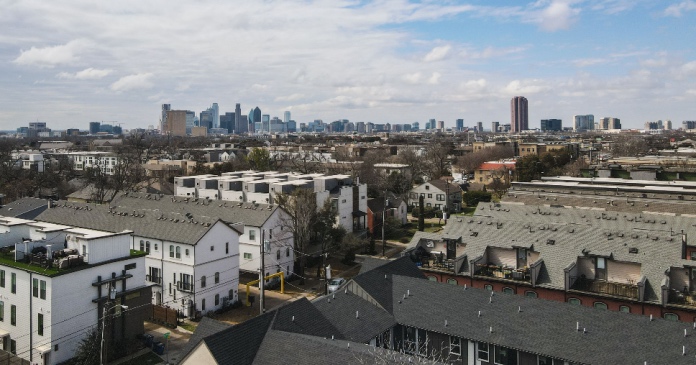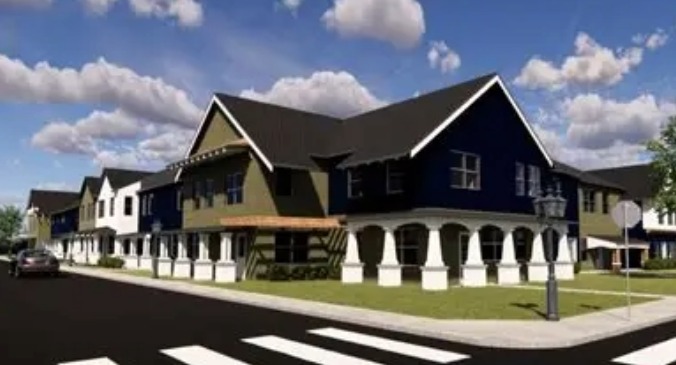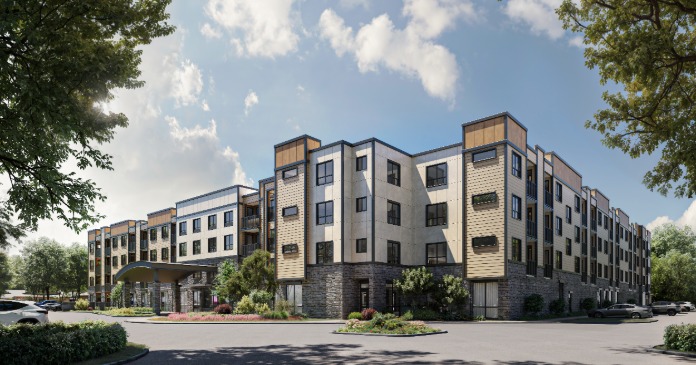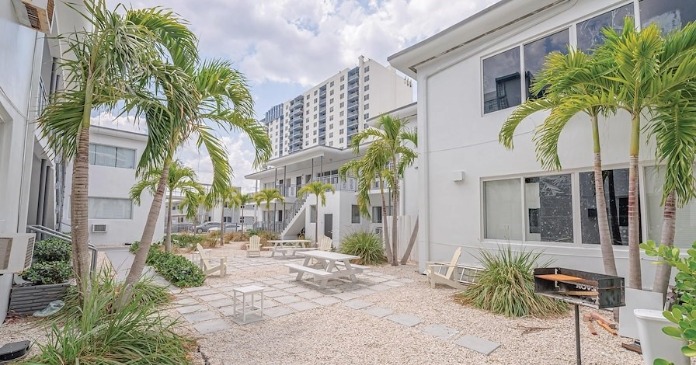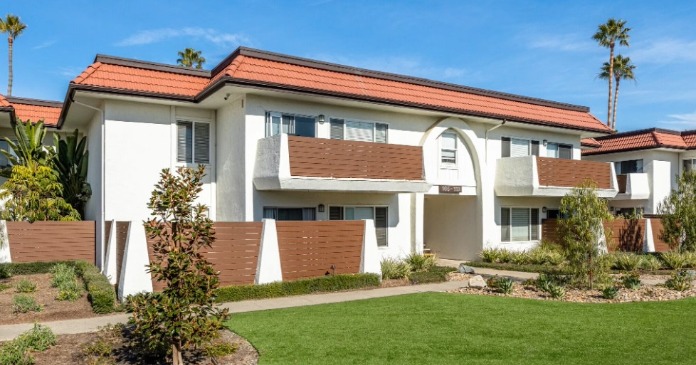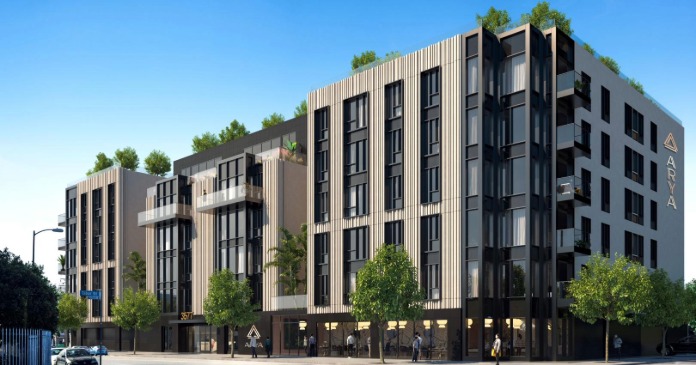Demand for apartments still outpaces supply, vacancies are at their lowest point in years, rents continue to rise faster than inflation and apartments remain the investor-favored property type in today’s low-interest-rate environment, all leading to another strong landlord’s market for the industry in 2012. And, with the temporary reinstatement of many of the Bush-era tax cuts, another recession has been avoided for now.
National Multi Housing Council (NMHC) Chief Economist Mark Obrinsky summarized the state of the industry in a Q4 2012 report, writing, “Even after nearly three years of recovery, apartment markets around the country remain strong as more report tightening conditions than not. The dynamic that began in 2010 remains in place; the increase in prospective apartment residents continues to outpace the pickup in new apartments completed. While development activity has picked up considerably since the trough, financing for both acquisition and construction remains constrained, flowing mainly to the best properties in the top markets.”
Demand for apartments began to pick up in 2009 and has been growing solidly since 2010. According to Reis, 36,000 units were absorbed in Q1 2012, the 12th consecutive quarter of positive absorption. With little to no new supply at the time, the national vacancy rate dropped to 4.9 percent in the first quarter of 2012, down 310 basis points from the peak in the same quarter of 2010 and well below the long-term average of 5.7 percent.
National occupancy by year-end 2012 averaged 94.2 percent, compared to 93.9 percent in 2011, the first time since 2006 that the national occupancy rate finished the year above 94 percent.
Axiometrics predicts the national occupancy rate for stabilized apartments will rise again this year to an average rate of 94.9 percent, but to achieve such growth, occupancy in Class C properties will need to maintain the momentum generated during 2012.
That improvement in occupancy has allowed owners to raise rents nationally more than 10 percent since the beginning of 2010, according to Reis and Prudential Real Estate Investors (PREI). For institutional Class A assets in high-barrier markets, the gains have been even greater.
Axiometrics reports the national apartment market averaged 3.85 percent effective rent growth in 2012, down slightly from an average of 4.75 percent in 2011 and expects effective rent growth to continue positive this year, but at an average rate of 3.6 percent.
Renter nation
The multifamily market fire is being fueled by a huge cohort of Americans led by the echo boomer generation, who are renting by choice and/or necessity in the wake of the housing debacle that resulted in a slew of foreclosures and subsequent tight lending that continues to make home purchase difficult.
With jobs tough to find, debt-strapped echo boomers have pushed the American dream of homeownership to the rear. America has become a nation of renters and, until recently, renting made more financial sense then buying a home because a lease was less costly than a mortgage.
This long-term demand driver for apartments in the wake of a post-recession development drought has lead to a development boom that will reverberate well into 2015, say most market watchers.
The National Association of Home Builder’s (NAHB) Multifamily Production Index that measures builder and developer sentiment about current conditions in the apartment and condo markets on a scale of 0 to 100 has improved for eight consecutive quarters, posting in September its highest level since the height of the 2005 housing bubble.
Developers responded to the healthy fundamentals by boosting construction last year to more than double the rate of 2009 and 2010 combined, at 233,400 units, but still lower than any year between 1995 and 2008.
By year-end 2012, Axiometrics reported close to 1.4 million market-rate apartment units in the construction pipeline across 328 MSAs and 833 submarkets. More than one million of those units were somewhere in the planning stage, from early conceptual drawings to late in the permitting process.
Including market-rate, student, senior and affordable units, 250,000 units were under construction as of late December last year. This year, one-third of the nation’s deliveries of new apartment communities will be concentrated in Washington D.C., Dallas, New York, Seattle, Austin and Houston.
Meanwhile, multifamily production, which has posted a 273 percent gain from its fourth quarter trough of 82,000 units in 2009 to 306,000 units in the final quarter of 2012, is expected to reach what is considered a normal level of production by 2014. On the multifamily side, NAHB is anticipating starts will increase 22 percent from 246,000 units last year to 299,000 in 2013, and rise an additional 6 percent to 317,000 units in 2014.
The (un)usual suspects
Large real estate investment trusts, private companies and mom-and-pop owners have dominated the apartment sector. But the rental industry is so hot it has attracted players from other sectors in search of higher returns.
Pension fund giant TIAA-CREF has been on an apartment-buying spree in MSAs across the country, taking a much bigger stake in the sector than in past years. The company, which owns about eight million sq. ft. of office, industrial and retail assets in the Puget Sound region, purchased three apartment communities for $300 million in Seattle this year and announced a partnership to build a high-rise apartment building in the city’s downtown.
Last year, some of the nation’s largest office and retail companies like office behemoth Boston Properties, mall giant Macerich and shopping center titan Simon Property Group moved into the apartment space, some for the first time, most through joint venture.
New York office landlord SL Green partnered with Big Apple apartment manager Stonehenge Partners to acquire 402 rental units and prestigious retail along the Gold Coast of New York’s Fifth Avenue retail corridor, according to a press release issued by SL Green in October 2012. SL Green paid $416 million for what is the company’s first apartment venture. Stonehenge will significantly reposition and manage the residential portion.
Commercial developer Blackrock Realty LLC hopes that building an apartment community instead of a planned retail building will save a 35.5-acre project connected to a train station in Fairfield, Conn., that has been fraught with setbacks. Fairfield Metro Center was originally designed as a one million sq. ft. retail and office complex with a train station and hotel component.
Blackrock purchased the land in 2001 when the economy was on firmer ground, but didn’t receive final land-use approval until 2007, right before the economy tanked. Nothing has been built except the centerpiece of the project-the Fairfield Metro Train Station that opened on December 5, 2011. While Blackrock has been unable to obtain financing for the four office buildings planned for the site without signed leases, Kurt Wittek, Blackrock principle and managing director, told attendees at a town hall meeting to discuss the project that he would have no trouble obtaining $52 million in funds to build the apartments, thereby jumpstarting the stalled mixed-use development.
Similarly, developers unable to move forward with commercial projects in central business district of Bethesda, Md., are proposing to replace previously planned office and retail with apartments, turning the master plan for the area on its head. Developers argue that the new rental housing will attract taxpayers to the city, but some question the wisdom of swapping housing for business space that would support much needed job-growth.
Meanwhile, homebuilders are getting in on the action, hedging their bets against another downturn in the housing market. XXX-based homebuilder Toll Bros. formed a subsidiary brand “Apartment Living” that plans to develop 600 rental units in the Washington D.C. area, where the company’s condo City Living brand plans its first multifamily for-sale project in the area-a seven-story building with 60 condos in downtown Bethesda. Toll’s apartments under its new rental brand will rise on two adjacent sites the company owns along the Capital Riverfront in downtown D.C.
Lennar, known for building large suburban tract housing, disclosed that its Lennar Multifamily Investors subsidiary has a $1 billion apartment pipeline, with much of that new supply to be started this year. Lennar, which plans to use as little of its own capital as possible by partnering with other companies, announced its entry into the rental business in October 2011 and is advancing into the construction phase this year.
Under construction in the Atlanta suburb of Johns Creek are 264 garden apartments-a $32 million partnership with Prudential Real Estate Partners-and a $36 million, 316-unit community consisting of four-story buildings in Jacksonville, Fla., in partnership with the Carlyle Group.
Proceed with caution
Given that development is the riskiest business in real estate, experts caution that only those with experience in the sector should get involved. The more savvy players looking to enter the multifamily arena partner up with experienced professionals. Even then developing is a tricky prospect.
“It is hard to build a capable development team and the balance sheet to support it,” said Green Street Advisor’s analyst Andrew McCulloch. “I would say that with respect to the public REITs, development has destroyed value more often than it has created it. Companies like AvalonBay should be developers because they are very capable and their track record is very good, but to Green Street, the perfect apartment REIT is large, simple, internally managed with low G&A, good corporate governance, low leverage and very limited development.”
Today, as developers from all sectors rush into the multifamily business, where demand of historical proportions and undersupply still combine to justify new construction, banks and others lenders seem more eager to provide funding at attractive rates than in the recent past.
“Proceed with caution,” say some market watchers. The availability of low-cost debt is a double-edged sword, clouding the weak economic fundamentals that continue to inhibit interest rates from normalizing. They warn that the single-family housing bubble was the result of just that combination.
Low interest rates enable developers to build with very little skin in the game and allow investors to trade assets at prices well in excess of replacement cost, especially when interest rates move up even a few hundred basis points.
Affordability also is a risk factor. High occupancy has allowed multifamily property owners and operators to raise rents aggressively making renting expensive relative to owning a home. Rents are rising faster than personal income, a situation that cannot be maintained over the long haul, say experts. “We do believe rent growth will slow partly because incomes have not kept pace to the extent that will allow them to keep pushing rents at the pace they have been. Development is also ramping considerably,” said McCulloch.
He believes rent growth actually hit a peak in 2011 and has been decelerating since. “We are already seeing pushback from renters,” he said. Green Street expects one more year of rent growth exceeding inflation, with growth this year ranging from one percent to six percent.
With rising rents, easing credit requirements for homeownership and the added lure of home price appreciation, will renters once more itch to buy homes of their own?
“We don’t expect an exodus from rental to single-family homes given structural and demographic factors that continue to favor the rental market,” said McCulloch.
But, even with today’s unprecedented demand for rental housing, interviewees tapped for the Urban Land Institute’s Emerging Trends in Real Estate report for 2013 point to overbuilding as one of the risk factors that could put a damper on the multifamily party. The nervous among them think it’s time to start shutting down construction pipelines, believing there is much more development then people are actually admitting.
Most of the new rental supply coming into the market is expected to hit first in the urban cores then spread to the suburbs in low-barrier markets as the development cycle matures. Because suburban markets offer some of the most affordable single-family homes in the nation, the chance of renters being lured into homeownership in suburban markets is greater.
In addition, much of the nation’s shadow market stock of single-family homes offered as rentals is in the suburbs. This shadow inventory is growing as investors and investment funds take advantage of super-low interest rates and sale prices to purchase single-family homes and offer them for rent.
CoStar Group warns that overbuilding is a real possibility in the apartment sector, not in this current wave of construction that will deliver in 2013, but the next. Inventory has increased at more than four or five times the national rate in certain markets and vacancies will most likely increase. Apartments currently under construction make up 1.4 percent of the total rental inventory in the top 54 markets, way above the other major property types.
But the NMHC believes that, barring a fall from a fiscal cliff, the current annual delivery rate of 250,000 units will not be enough to meet renter demand. “Assuming current trends hold over for the rest of this decade, we will need at least 300,000 new apartment units annually and possibly as many as 400,000 to meet demand,” said Mark Obrinsky, NMHC vice president of research and chief economist.
He thinks that over the rest of this decade apartment demand will recover to pre-2008 strength, unless the economy falls back into recession.
Meanwhile, Prudential Real Estate Investors (PREI) warns investors and developers to take a more balanced view of the sector.
“Apartments have outperformed other real estate types, but are not likely to outperform for more than another couple of years. Nearly two years after we published a paper entitled, The Early Innings of an Apartment Market Recovery, which contained our view that market conditions pointed toward a solid recovery, our strongly bullish view has turned more balanced,” said PREI in its most recent report on the industry.





